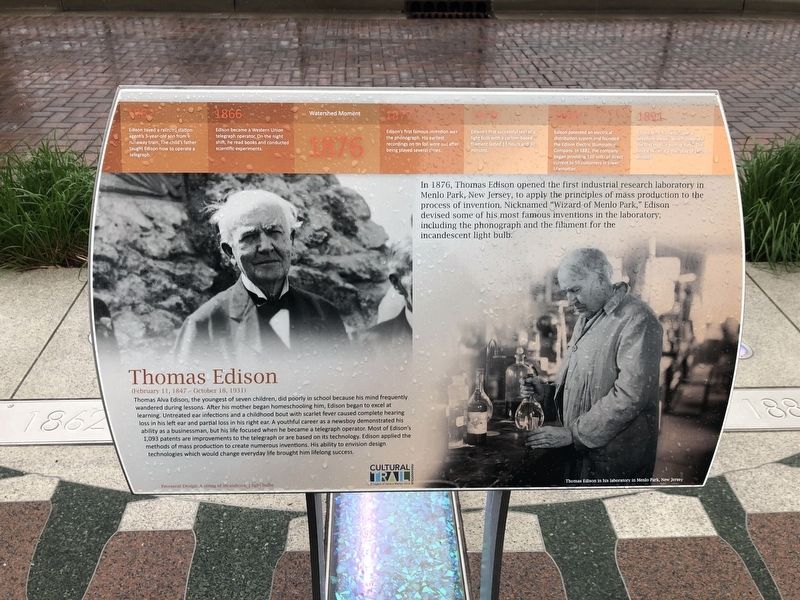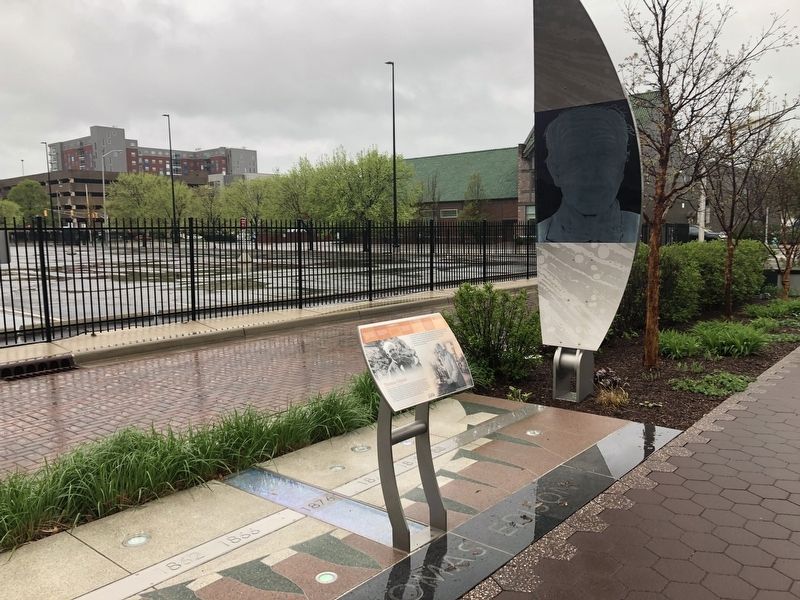Downtown in Indianapolis in Marion County, Indiana — The American Midwest (Great Lakes)
Thomas Edison
(February 11, 1847 - October 18, 1931)
Thomas Alva Edison, the youngest of seven children, did poorly in school because his mind frequently wandered during lessons. After his mother began homeschooling him, Edison began to excel at learning. Untreated ear infections and a childhood bout with scarlet fever caused complete hearing loss in his left ear and partial loss in his right ear. A youthful career as a newsboy demonstrated his ability as a businessman, but his life focused when he became a telegraph operator. Most of Edison's 1,093 are improvements to the telegraph or are based on its technology. Edison applied methods of mass production to create numerous inventions. His ability to envision design technologies which would change everyday life brought him lifelong success.
1862
Edison saved a railroad station agent's 3-year-old son from a runaway train. The child's father taught Edison how to operate a telegraph.
1866
Edison became a Western Union telegraph operator. On the night shift, he read books and conducted scientific experiments.
Watershed Moment
1876
In 1876, Thomas Edison opened the first industrial research laboratory in Menlo Park, New Jersey, to apply the principles of mass production to the process of invention. Nicknamed "Wizard of Menlo Park," Edison devised some of his most famous inventions in the laboratory, including the phonograph and the filament for the incandescent light bulb.
1877
Edison's first famous invention was the phonograph. His earliest recordings on tin foil wore out after being played several times.
1879
Edison's first successful test of a light bulb with a carbon-based filament lasted 13 hours and 30 minutes.
1880
Edison patented an electrical distribution system and founded the Edison Electric Illuminating Company. In 1882, the company began providing 110 volts of direct current to 59 customers in lower Manhattan.
1891
Edison built a kinetoscope, a peephole viewer, which displayed the first motion picture films. The device became a mainstay of penny arcades.
Erected by Cultural Trail Indianapolis.
Topics and series. This historical marker is listed in these topic lists: Communications • Industry & Commerce • Science & Medicine. In addition, it is included in the Indiana, Cultural Trail Indianapolis series list. A significant historical year for this entry is 1862.
Location. 39° 46.61′ N, 86° 9.542′ W. Marker is in Indianapolis, Indiana, in Marion County. It is in Downtown. Marker is on West Walnut Street east of North Illinois Street,
Other nearby markers. At least 8 other markers are within walking distance of this marker. Mark Twain (a few steps from this marker); Booker T. Washington (a few steps from this marker); Susan B. Anthony (within shouting distance of this marker); Andrew Carnegie (within shouting distance of this marker); Benjamin Franklin (within shouting distance of this marker); Wilbur and Orville Wright (about 300 feet away, measured in a direct line); Albert Einstein (about 300 feet away); Scottish Rite Cathedral (about 400 feet away). Touch for a list and map of all markers in Indianapolis.
Credits. This page was last revised on May 16, 2023. It was originally submitted on April 27, 2019, by Devry Becker Jones of Washington, District of Columbia. This page has been viewed 209 times since then and 24 times this year. Photos: 1, 2. submitted on April 27, 2019, by Devry Becker Jones of Washington, District of Columbia.

